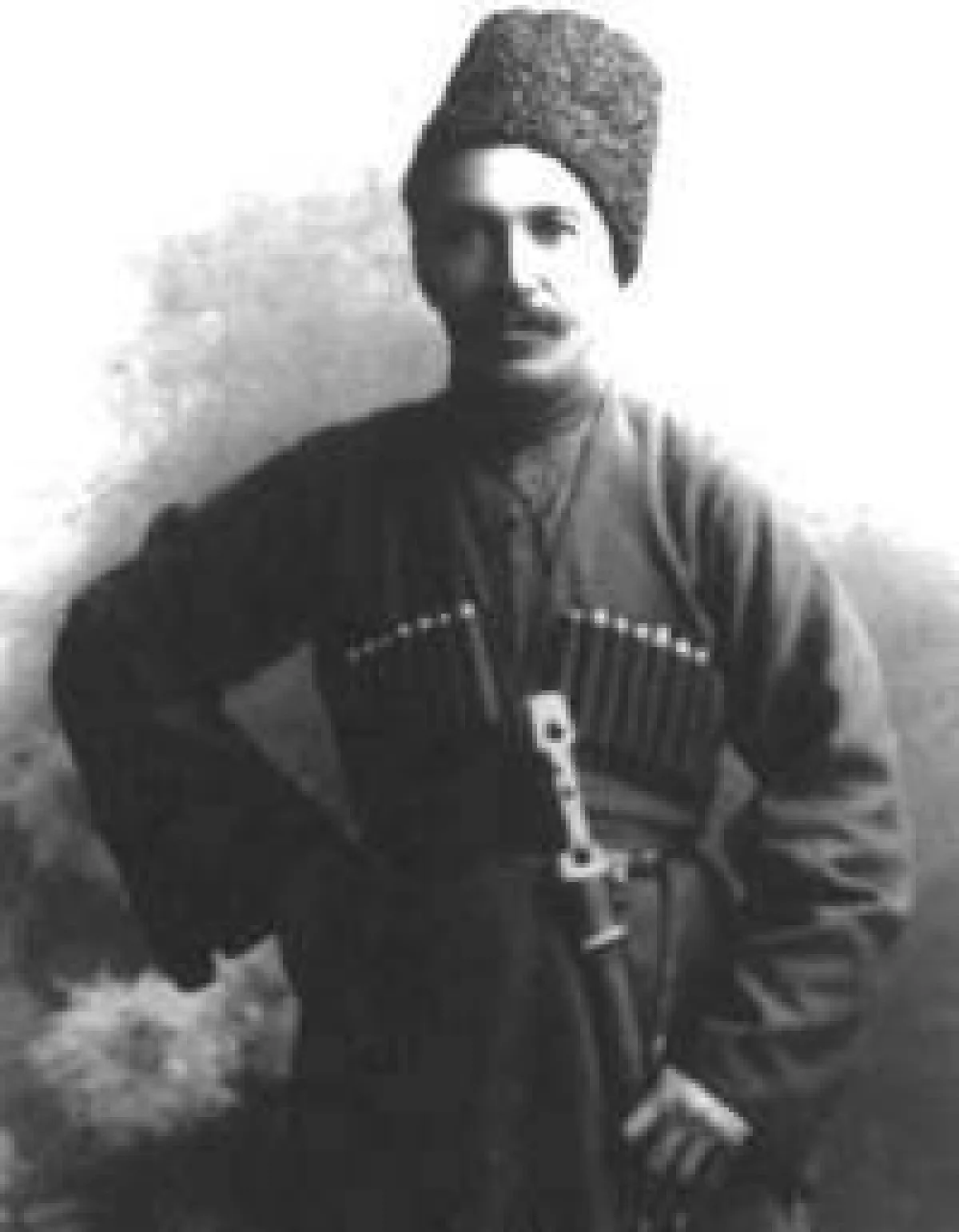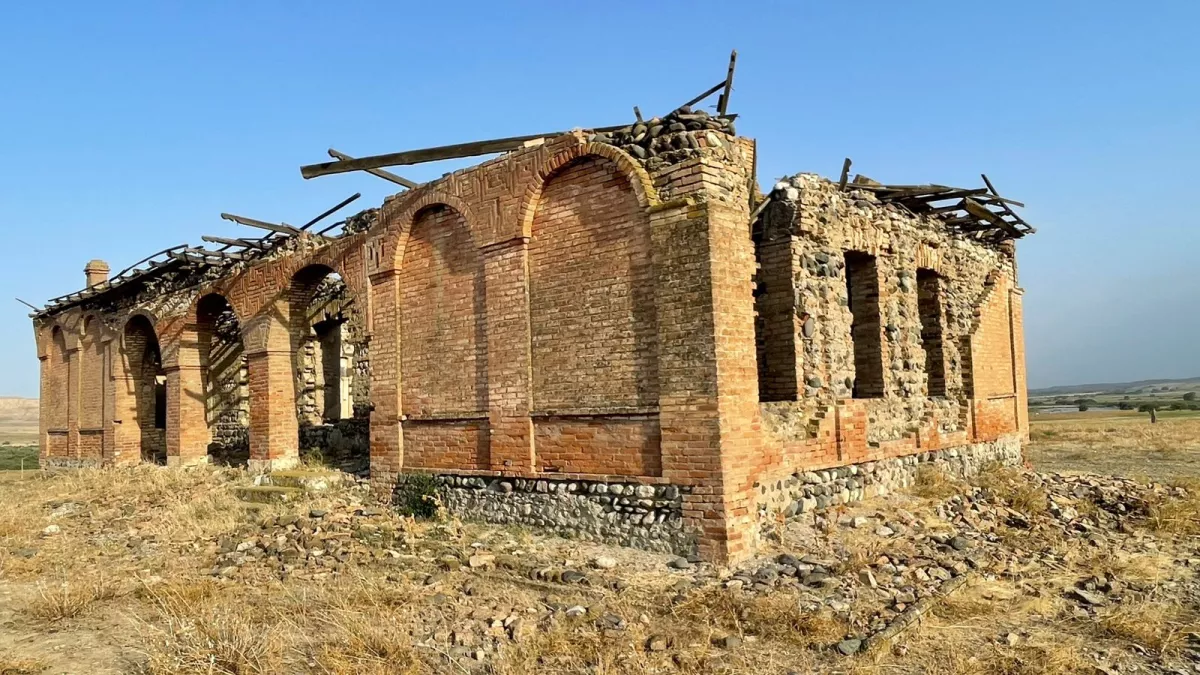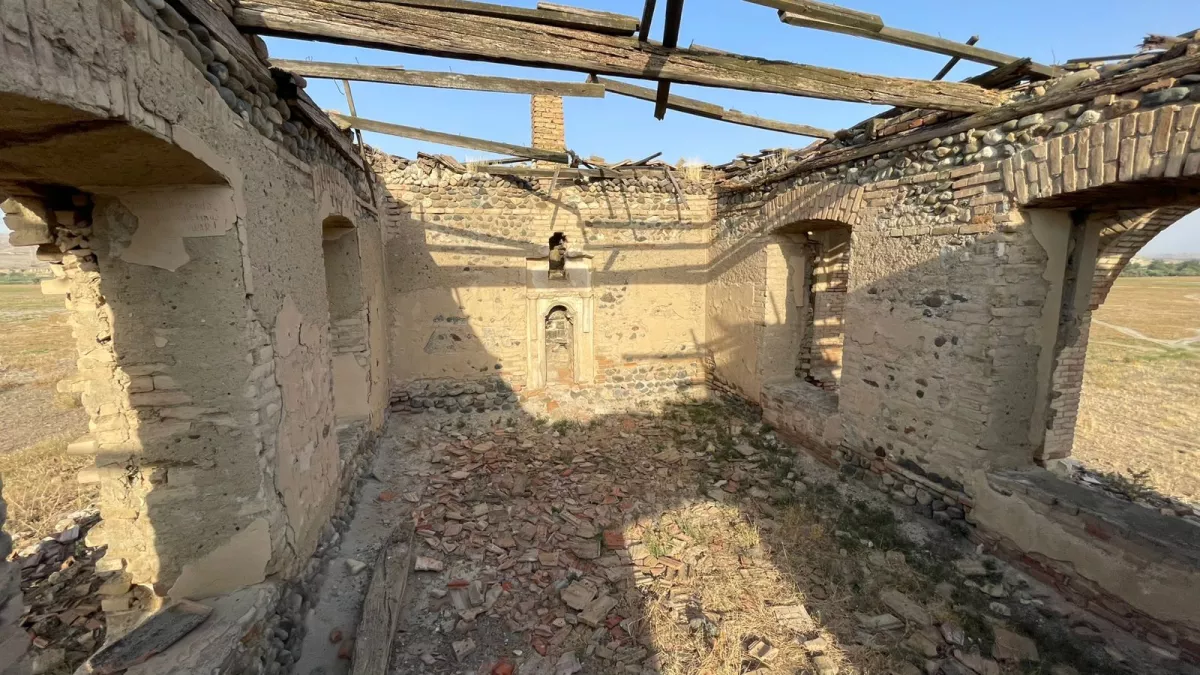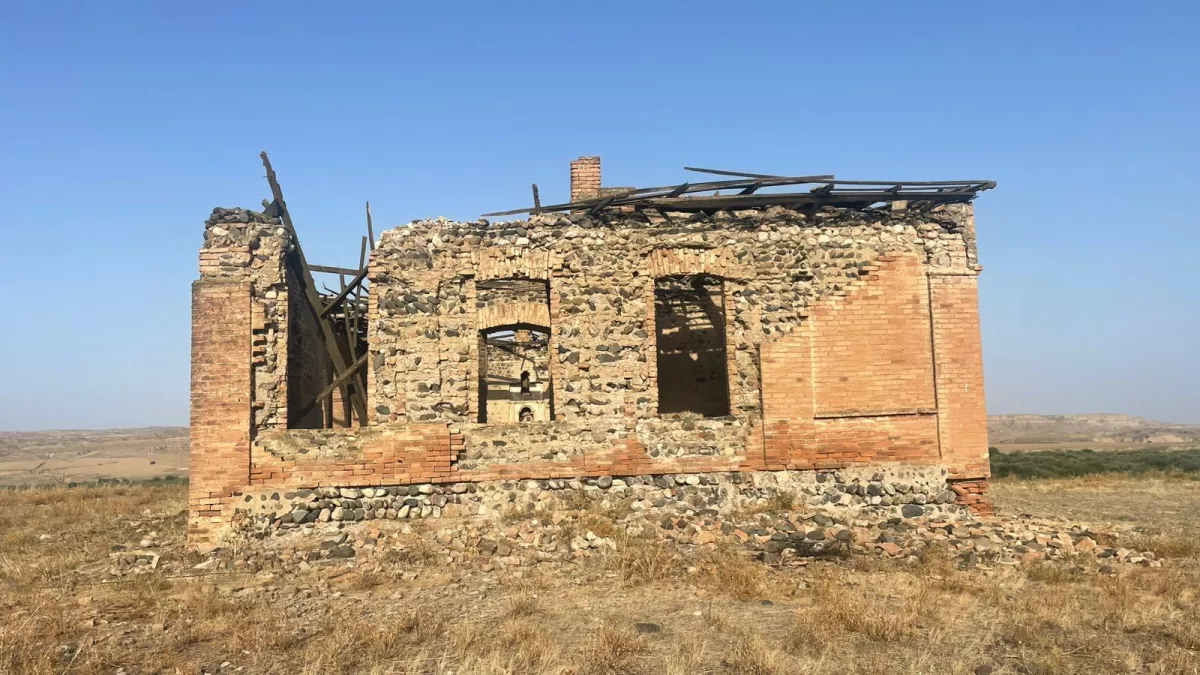Forgotten architecture: Echoes of history and craftsmanship A journey through history on Caliber.Az
Azerbaijan’s architecture boasts numerous expressive and beautiful examples scattered across the country. These buildings reflect the nation’s rich cultural heritage and the skill of local architects, blending tradition with modernity. One such monument is the house of Israfil Agha Karbalayev, located in the village of Girag Kasaman in the Aghstafa district. It holds an important place in Azerbaijan’s architectural legacy.

The building is believed to have been constructed in 1914. The house sits at the highest point of the village — approximately 100 meters above ground — and stands out both for its location and architectural design. The construction was commissioned by the well-known bey and philanthropist of the Gazakh district, Israfil Agha Oruj oghlu Karbalayev.
The house was designed by an architect invited from Tiflis (modern-day Tbilisi), and interior finishing materials were brought from Tiflis and Saint Petersburg. The building’s appearance successfully combines classical European features with Eastern ornaments. For its time, the house was remarkable for its height (7.5 meters), original layout, and unique roof design. According to local residents, the construction took about six years to complete.

The house featured three rooms and two balconies, with a total area exceeding 200 square meters. Its sturdy walls were built from fired bricks, while the internal partitions were made of river stone. Interestingly, according to the memories of local elders, special mixtures were used in the construction: clay, slaked lime, and a traditional blend that included egg yolk and gravel. This technique ensured the building’s durability: even today, despite its dilapidated state, the walls remain strong.
The façade, with its numerous windows, arched openings, and balconies, gives the house a distinctive character. It stands out among the village buildings with its impressive appearance and thoughtful architectural design. The once-cozy veranda, overlooking the surrounding landscape, was designed with local climatic conditions in mind and seemed to invite visitors to linger and enjoy the beauty of the natural surroundings.

Local residents recall that the house’s interiors were once remarkable for their lavish décor and exquisite details. Today, only a few elements of the wooden craftsmanship remain, weakened but still bearing the mark of the skill of past masters. For a rural area, this house was truly extraordinary: its size and architectural design immediately set it apart from other buildings.
The house is also linked to significant chapters in the village’s history. Its owner not only built the residence but also established a nearby mill and mosque, leaving a lasting impact on the community. These structures served the villagers for many years, while the house gradually became a symbol of the village itself.
As a philanthropist, Israfil Agha also cared for the townspeople: he funded a public bath in the town centre, which became an important part of local infrastructure.
The house of Israfil Agha was not merely a residence but a focal point, symbolising the wealth and taste of its owner. During the Soviet period, the building was repurposed for public use, housing a medical point, library, and community club. However, in the 1960s, the villagers were relocated due to plans to construct a hydroelectric station on the Kura River. Although the project was never completed, the house was left unattended and began to deteriorate.

Today, this building stands as a silent witness to history, evoking the people, lives, traditions, and culture of its era. Stripped of its roof and windows, it still impresses with the beauty of its architecture and the craftsmanship of its builders, even in its partially ruined state.
Several years ago, initiatives were proposed to restore this unique architectural work with the help of local residents. A detailed restoration plan was even prepared, capable of returning the house to its former glory. Unfortunately, all these proposals remained unrealised.
The house of Israfil Agha Karbalayev deserves not only attention but active preservation. Its unique appearance calls for urgent restoration to safeguard this cultural heritage for future generations.
By Vahid Shukurov, exclusively for Caliber.Az








